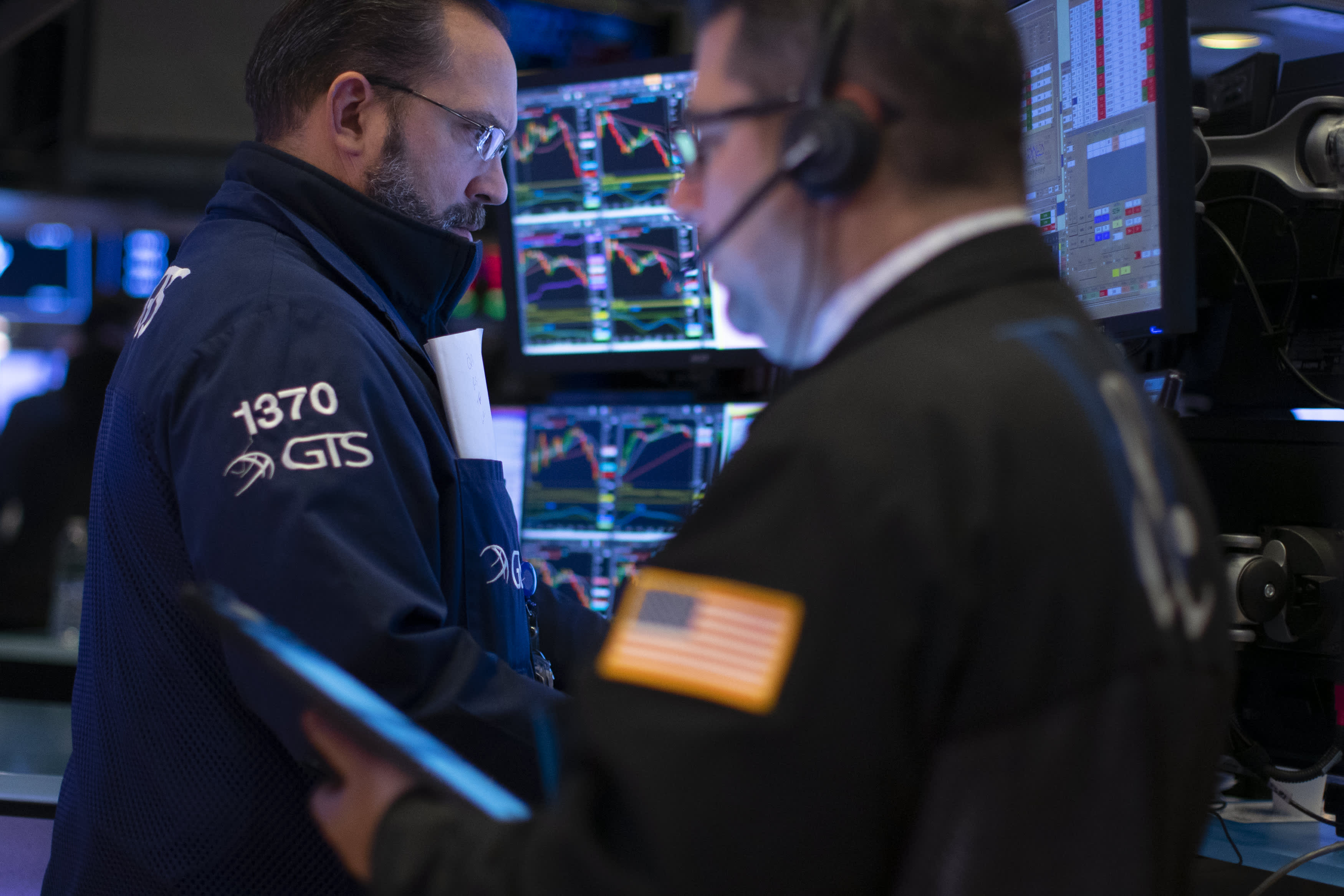Traders work on the floor of the New York Stock Exchange (NYSE) on January 10, 2020 in New York City.
Kena Betancur | Getty Images
The stock sell-off deepened on the last day of January on concerns that the deadly coronavirus will disrupt the global economy and in the process, ruining an old market indicator that was signaling a positive year.
As goes January, so goes the year — this Wall Street saying from the widely-watched “January barometer” suggests a correlation between January’s performance and full-year returns.
Going back to 1950, when the S&P 500 was positive in January, 86% of the time the full year turned out to be up with only ten major errors through 2019, according to Stock Trader’s Almanac who identified the seasonal signal.
The track record is even better in presidential election years. Since 1928, when January is up in an election year, the year is up 100% of the time with an average S&P 500 return of 16.6%, according to Bank of America.
Friday’s losses cut the January returns for the S&P 500 to just about flat, while the Dow Jones Industrial Average has turned red on the month, setting up a fuzzy signal for 2020 based on the barometer.
Perhaps the indicator now is signaling what a volatile year we may have ahead.
Investors were caught off guard in the middle of January when the coronavirus spread from China to the U.S., causing a broad sell-off in risk assets. Now, the number of confirmed coronavirus cases have risen to 9,882 in mainland China, bringing the global total to more than 10,000 cases with at least 213 deaths. Major U.S. airlines also .
“Uncertainty is never great for stocks, but when it involves the lives of many, many people, it’s impossible to know just what kind of problems this uncertainty will eventually create,” Matt Maley, chief market strategist at Miller Tabak, said in a note.
History shows the barometer’s predictive power is still reliable even with small gains in the first month of a year. Since 1950, there has been 12 times when the S&P 500 is up less than 2% in January, and the market finished the year in the green 11 times of those years, according to Stock Trader’s Almanac.
To be sure, the barometer is by no means an all-clear signal for investors to add more risk given the mounting pressure the market is already under. It’s a popular indicator traders reference, but not always take seriously. The stock market goes up most years more often than not, so it’s possible the indicator is a coincidence.
Still, the late-month sell-off may portend more trouble ahead for the year. On the politics front, the stock market has started to worry about Bernie Sanders gaining momentum in the presidential pool. “Bond King” Jeffrey Gundlach labeled a Sanders “scare,” warning investors that the biggest risk to the markets in 2020 is the Vermont senator becoming “more believed in as a real force.”
“Elevated policy uncertainty usually leads to lower equity valuations and higher implied volatility in the months ahead of Election Day,” Ben Snider, Goldman Sachs equity strategist, said in a note. “The wide range of the various candidates’ policy views and the narrow range of polling and prediction market data indicate a particularly uncertain environment this year.”
— CNBC’s Nate Rattner contributed to this report.
